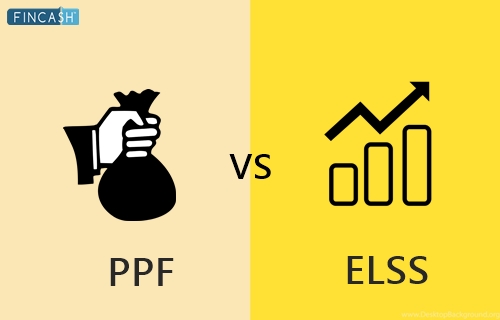NPS vs PPF: Know Where to Invest!
NPS vs PPF? Confused! where to invest for achieving your long-term investment goals? Both these investment plans have their own benefits when it comes to post-Retirement planning. With various similarities, the NPS scheme and PPF accounts have certain differences as well. Let’s understand each of these investment schemes before analysing their differences. Have a look!

NPS (National Pension Scheme)
National pension scheme is one of the investment instrument for retirement. It is open to all, however, it is mandatory for all government employees. Investing in NPS is one of the good options for retirement planning as the investors do not face any direct tax Deduction at the time of withdrawal. As per the income tax Act of 1961, NPS returns are tax-free in the hands of investors. Moreover, the scheme is backed by the Government of India, therefore, it is relatively less risky.
PPF (Public Provident Fund)
Public provident fund is one of the Tax Saving Scheme of the Central Government that was framed under the PPF Act of 1968. It is suitable for all as the PPF account interest rates are fixed and offers stable returns. This long-term investment option is backed by the Government of India so it is a safe and offers tax benefits as well. Moreover, PPF has a low maintenance cost and provides loan options as well.
NPS VS PPF
Typically, there are certain comparative features to determine the difference between NPS and PPF schemes. We have listed some of these parameters below to help you understand the difference between them.
| Particulars | NPS | PPF |
|---|---|---|
| Eligibility | Indian citizens and NRIs are allowed to open accounts | Only Indian citizens are allowed to open the account |
| Minimum age | 18-60 years | Can be opened even in the name of a minor with either one of the parents of custodians |
| Rate of return | 9-12% and this depends on the Market situation | 7.1% Q2 (July-September) FY 2022-23 |
| Contribution for a year | In NPS Tier 1, the minimum initial contribution is Rs 500 and in NPS Tier 2, it is Rs 1,000. No maximum limit | Minimum INR 500, Maximum INR 1.50 lakh |
| Tax on contribution | Contribution made to NPS is Deductible from the total Income | Tax Free |
1. Investment Objective
NPS is an investment that is suitable for long-term retirement planning. As the age of retirement is 60 years, so if the investor makes an investment at the age of 30, the investment tenure will be 30 years.
While PPF is a just a long-term Investment plan with a tenure of 15 years.
2. Age Limit of NPS & PPF
The age limit to invest in NPS is 18-60 years. On the other hand, there is no age limit to invest in PPF. An investor can invest as and when he wants.
Talk to our investment specialist
3. Fund Manager
The investment in NPS is managed by one of the pension fund managers, who are chosen by the Government of India for this purpose. Currently, there are eight fund managers among which you have to select one to invest your money. But, the PPF investment is managed by the Central Government.
4. Lock-in Period
Under national pension scheme, the investment is locked in up to the investor’s age of retirement i.e. 60 years. While for public provident fund the lock-in period is 15 years.
5. NPS & PPF Account Interest Rate
There is no fixed return rate for NPS. It varies based on your allocation in equities, debt securities and government securities. Also, there are no payouts yearly, but your investment value gets appreciated with time. On the other hand, the interest on PPF is paid out at the end of every year. The interest rate is fixed and is determined at the beginning of every financial year. For Q2 (July-September) FY 2022-23, the interest rate of Public Provident Fund is 7.1%.
6. Tax Benefits
By investing in an NPS, one can avail tax deductions up to INR 2 lakh from one’s Taxable Income. For PPF, the maximum limit of tax deductions is INR 1,50,000. So, the ones falling under the tax bracket of 30% can save up to INR 60,000 by investing in NPS and up to INR 45,000 in a PPF.
7. Taxation
With NPS, one can avail tax benefits only on the Capital appreciation of the investment and not on the principal amount that one receives on maturity and withdrawal. But in a PPF, neither the principal amount nor the interest earned is taxed.
8. Post-Maturity Features
After maturity of your NPS investment, 60% of the NAV (Net Asset Value) is paid to you and the rest 40% is compulsorily reinvested in an annuity scheme offered by various Life Insurance companies. The principal amount invested is not paid back by the annuity, but you receive some monthly amount as pension from the annuity. Contrarily, in a PPF, both the principal amount and the interest earned are paid back.
9. Premature Withdrawal of PPF & NPS
In a national pension scheme, if you exit the scheme before the maturity period, you are only paid 20% of your net value of your investment. The rest 80% is re-invested in an annuity scheme and you earn the pension for it. Further, you are allowed to prematurely exit a PPF account as well. But, you are allowed to withdraw 50% of your investment at the end of the 4th year following the year of withdrawal and also withdraw every year after the completion of 7 years of your PPF account.
Conclusion
So, if you are in a dilemma of making an investment in National Pension Scheme (NPS) or Public Provident Fund (PPF), read the above mentioned “NPS vs PPF” section carefully. Think twice and invest wisely!
All efforts have been made to ensure the information provided here is accurate. However, no guarantees are made regarding correctness of data. Please verify with scheme information document before making any investment.












